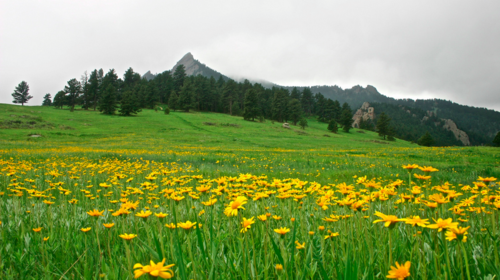
A meadow is a grassy area of land that may be an agricultural field or a wild area that is self-sown.[1] Meadows contain grasses, non-woody plants, wildflowers, weed plants, etc.[1]
A meadow is not a technical term but more of a cultural term.[2] It is a type of ecosystem that is made up of community of a plant or plants reliant on surface water (or shallow ground water) and has mostly herbaceous species (grass), with some woody vegetation such as trees and shrubs.[2]
An agricultural meadow is not grazed heavily, or at all, but is allowed to develop its grassland.[1] This grass can then be turned into hay for livestock.
Meadow ecology[edit | edit source]
The ecology of meadows is complex.[2] They are ecologically important because they support a wide range of flora and fauna attracted by the sunny and open area a meadow provides.[1] The pollinating potential is high, due to the production of wildflowers, attracting bees and other pollinating insects and perhaps some mammals.
Wildflower meadows are important for biodiversity.[3] Urban meadows can provide open areas that encourage various species to use the area, provide colour in the urban areas and serve as a focal point for the community to actively manage and care for nature within the urban setting.[3]
Meadows play an important role in soaking up water when the snowpack melts in areas subject to snow.[2]